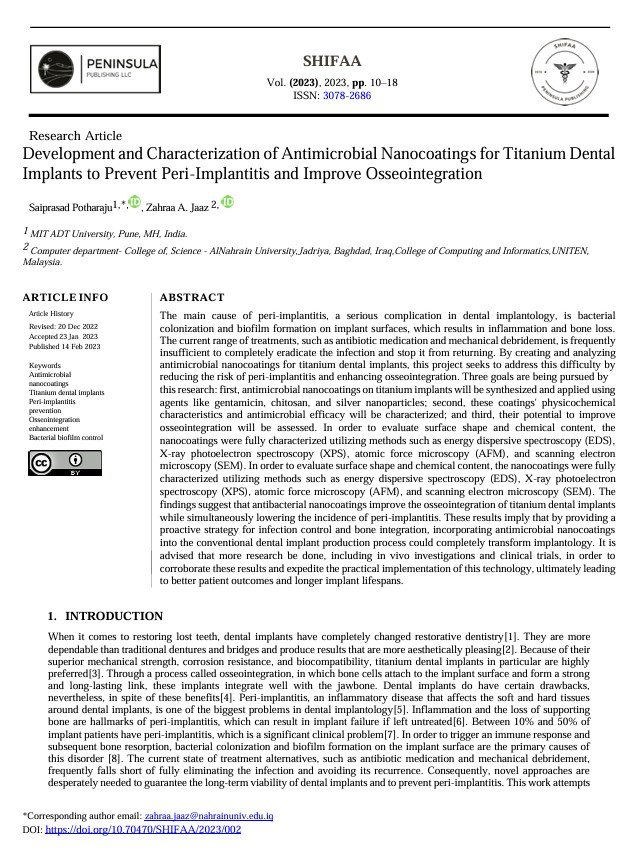Development and Characterization of Antimicrobial Nanocoatings for Titanium Dental Implants to Prevent Peri-Implantitis and Improve Osseointegration
Main Article Content
Abstract
The main cause of peri-implantitis, a serious complication in dental implantology, is bacterial colonization and biofilm formation on implant surfaces, which results in inflammation and bone loss. The current range of treatments, such as antibiotic medication and mechanical debridement, is frequently insufficient to completely eradicate the infection and stop it from returning. By creating and analyzing antimicrobial nanocoatings for titanium dental implants, this project seeks to address this difficulty by reducing the risk of peri-implantitis and enhancing osseointegration. Three goals are being pursued by this research: first, antimicrobial nanocoatings on titanium implants will be synthesized and applied using agents like gentamicin, chitosan, and silver nanoparticles; second, these coatings' physicochemical characteristics and antimicrobial efficacy will be characterized; and third, their potential to improve osseointegration will be assessed. In order to evaluate surface shape and chemical content, the nanocoatings were fully characterized utilizing methods such as energy dispersive spectroscopy (EDS), X-ray photoelectron spectroscopy (XPS), atomic force microscopy (AFM), and scanning electron microscopy (SEM). In order to evaluate surface shape and chemical content, the nanocoatings were fully characterized utilizing methods such as energy dispersive spectroscopy (EDS), X-ray photoelectron spectroscopy (XPS), atomic force microscopy (AFM), and scanning electron microscopy (SEM). The findings suggest that antibacterial nanocoatings improve the osseointegration of titanium dental implants while simultaneously lowering the incidence of peri-implantitis. These results imply that by providing a proactive strategy for infection control and bone integration, incorporating antimicrobial nanocoatings into the conventional dental implant production process could completely transform implantology. It is advised that more research be done, including in vivo investigations and clinical trials, in order to corroborate these results and expedite the practical implementation of this technology, ultimately leading to better patient outcomes and longer implant lifespans.
Article Details

This work is licensed under a Creative Commons Attribution 4.0 International License.
